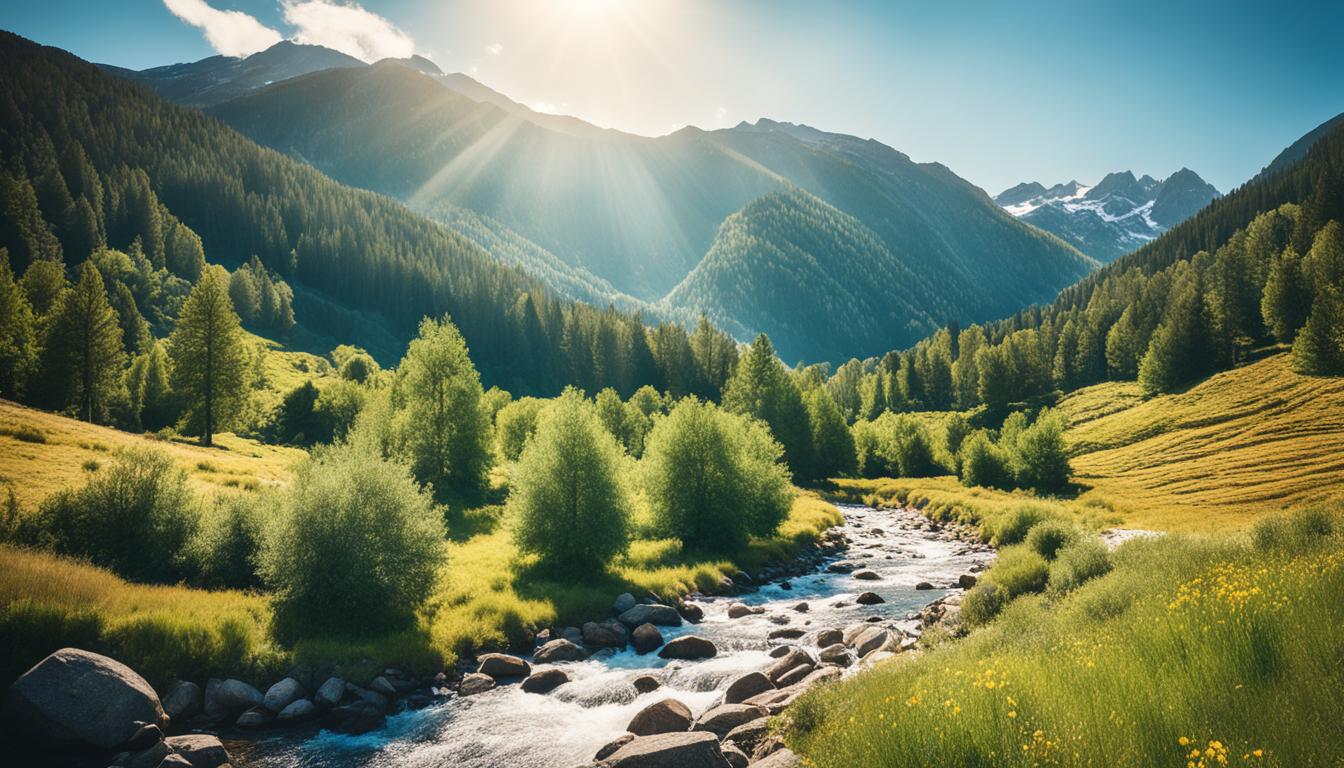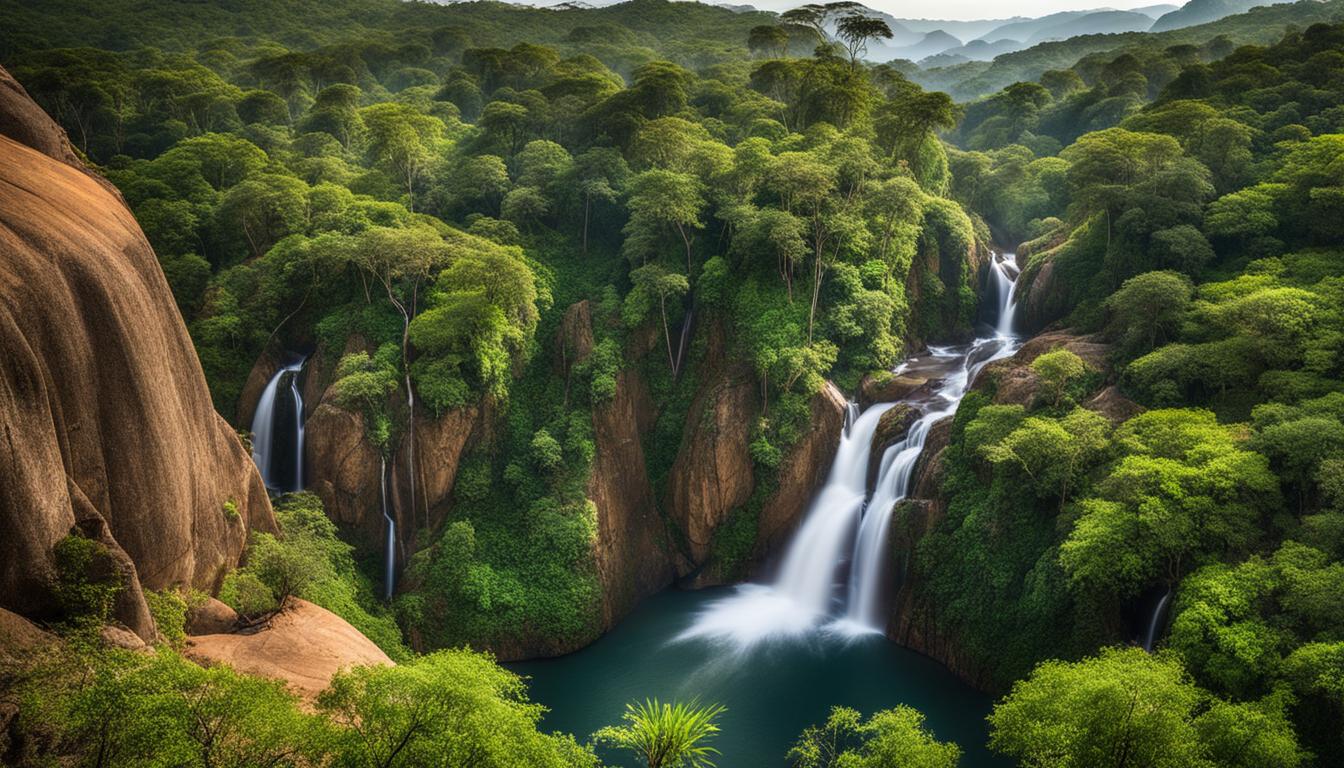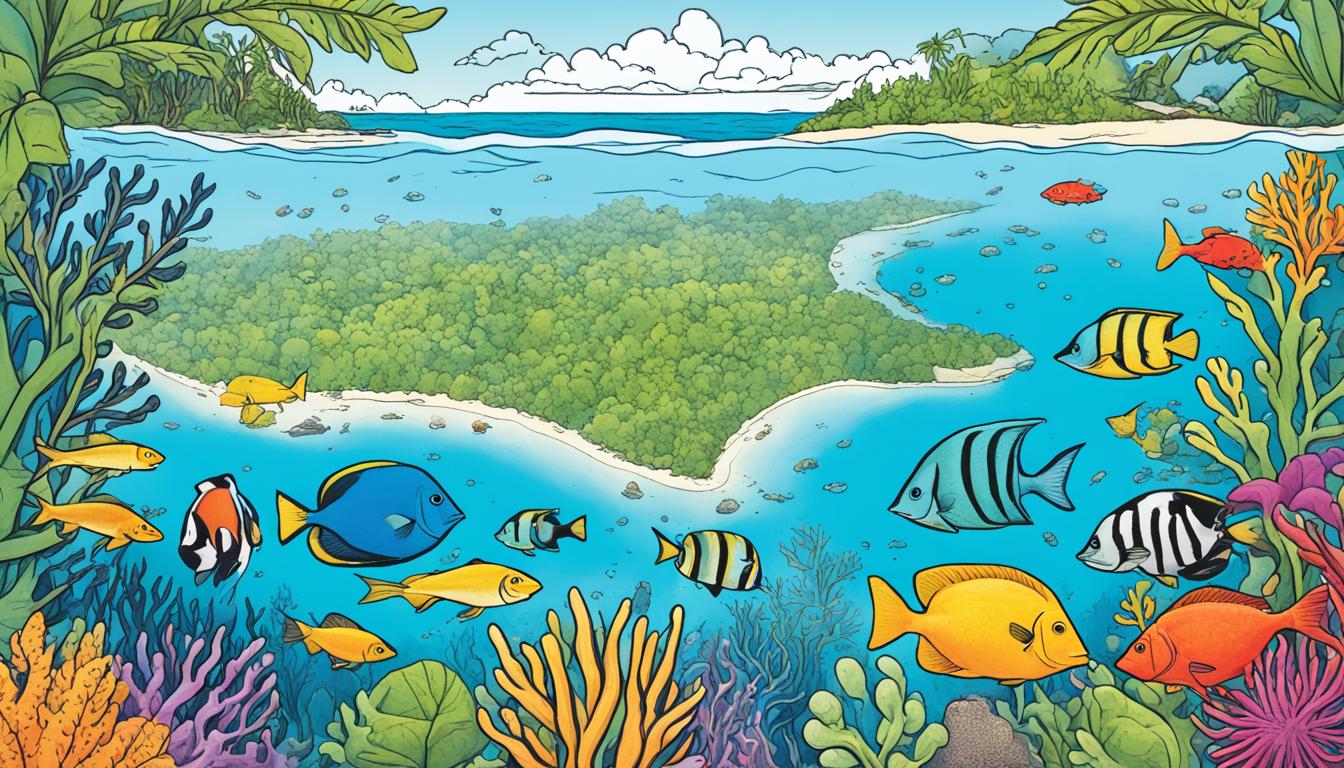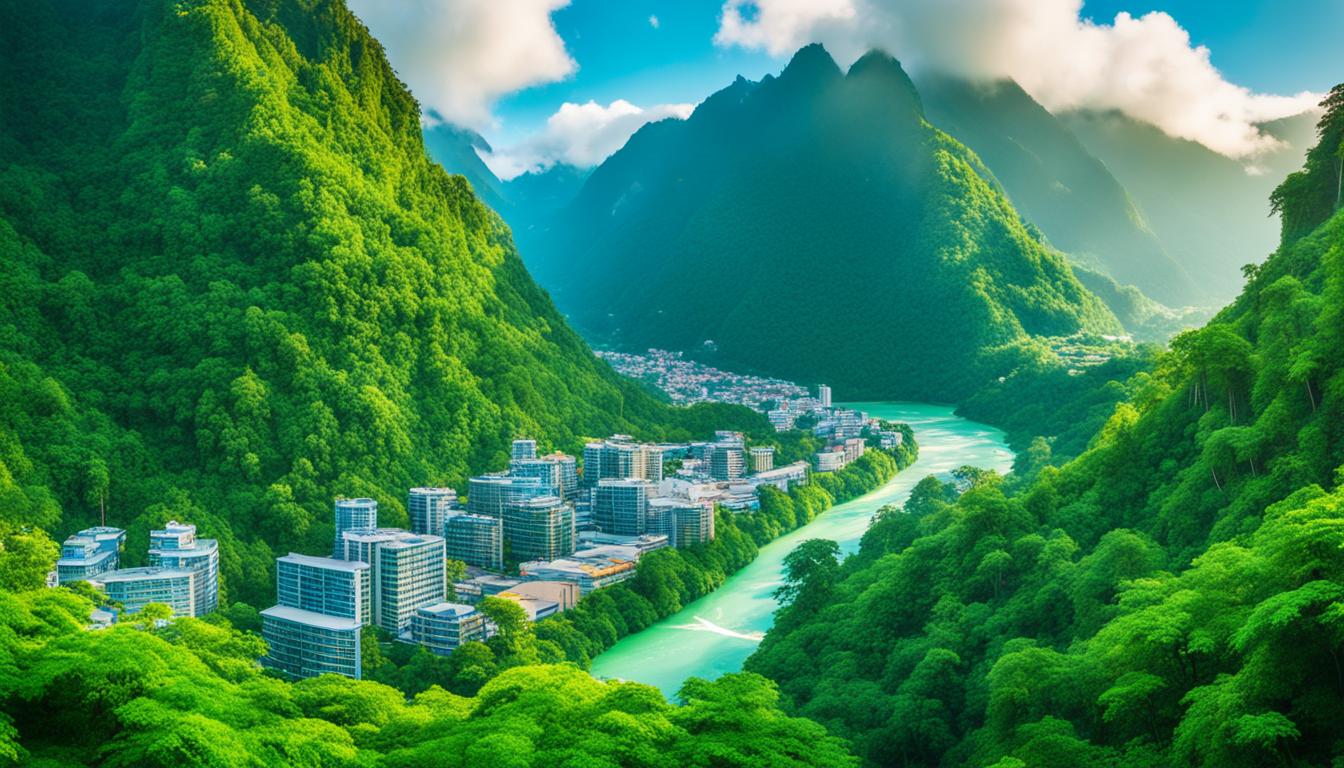Albania Sacred Natural Sites and Biodiversity
Did you know that Albania is home to a remarkable treasure trove of sacred natural sites?
These ancient protected areas, revered by local communities for centuries, not only hold immense cultural and religious significance, but they also play a vital role in conserving the country’s rich biodiversity.
From ancient groves adorned with mystical rituals to Catholic and Orthodox sites, Albania boasts a diverse collection of sacred natural sites that are a testament to the deep-rooted connection between spiritual reverence and nature preservation.
Despite their importance, these sites often lack official recognition and inventories, leaving them vulnerable to the encroachment of modern development and environmental degradation.
Key Takeaways:
- Albania is home to a wealth of sacred natural sites, ranging from ancient groves to Catholic and Orthodox sites.
- These sites are vital for conserving Albania’s biodiversity, providing habitats for endangered species and rare ecosystems.
- Despite their significance, many of these sites lack official inventories and recognition from conservationists and the scientific community.
The Importance of Sacred Natural Sites
Sacred natural sites play a crucial role in the conservation of biodiversity and ecological diversity in Albania. These sites not only hold significant cultural and spiritual value but also provide havens for unique ecosystems and endangered species.
Conservation efforts in Albania are bolstered by the traditional ecological knowledge held by indigenous and local communities. This knowledge, passed down through generations, contributes to the sustainable management and protection of sacred natural sites.
“Sacred natural sites are a testament to the power of religion in community-based conservation. They have stood the test of time, preserving both natural and cultural heritage for centuries.” – Dr. Maria Krasniqi, Conservation Biologist
The long-standing existence of these sites is a testament to their effectiveness in ensuring biodiversity conservation. They serve as sanctuaries for rare plant and animal species, providing vital habitats and corridors for their survival.
Furthermore, the traditional ecological knowledge associated with these sites offers valuable insights into ecological processes and sustainable resource management. By harmonizing modern conservation strategies with traditional practices, we can achieve effective and holistic conservation outcomes.
Conservation Impact at Sacred Natural Sites
Conservation efforts at sacred natural sites have a wide-reaching impact. They contribute to the protection and preservation of Albania’s unique ecological diversity by:
- Promoting habitat restoration and sustainable land-use practices
- Supporting the recovery of endangered species
- Preserving traditional agricultural practices and fostering sustainable livelihoods
- Enhancing community resilience and social cohesion
The Role of Sacred Natural Sites in Ecotourism
The significance of sacred natural sites extends beyond conservation efforts. These sites also attract ecotourists, drawn by the opportunity to experience pristine nature and cultural heritage. Ecotourism activities such as hiking, wildlife observation, and learning about traditional customs contribute to the local economy while raising awareness about the importance of biodiversity conservation.
“Ecotourism at sacred natural sites provides a unique opportunity for visitors to connect with nature and experience the spiritual and cultural significance of these sites. It fosters a sense of reverence and appreciation for the natural world.” – Maria Rodriguez, Ecotourism Expert
Investing in the sustainable development of ecotourism around sacred natural sites can create a win-win situation, benefiting local communities through economic growth while ensuring the long-term preservation of these invaluable sites.
As we continue to recognize the importance of sacred natural sites, it is essential to strengthen partnerships between conservation organizations, local communities, and government authorities. Together, we can protect and nurture Albania’s ecological diversity while respecting and celebrating the cultural and spiritual significance of these sacred places.
Sacred Natural Sites in Europe
Europe has a fascinating history of sacred natural sites that dates back to pre-Christian and classical times. Ancient civilizations such as the Druids, Celts, Lithuanians, and Finns revered these sites as sacred groves, which are now protected areas. These sacred groves were spaces of worship and communion with nature, where rituals and ceremonies took place to honor gods and spirits.
Today, some of these sacred lands in Europe have been recognized and incorporated into national conservation networks, acknowledging their importance for biodiversity and cultural preservation. However, many others remain outside the official protected area system, putting them at risk of degradation and destruction.
These sites are not only important for their ecological value but also for the preservation of cultural heritage. They represent a connection to ancient traditions and offer a window into the spiritual beliefs and practices of past civilizations.
One notable example of a sacred natural site in Europe is the Sacred Lands of Albania. Albania is home to a diverse range of natural sites that hold immense cultural and ecological significance. From ancient oak groves to mountain peaks, these sacred lands are considered vital for nature conservation in Albania.
The Importance of Nature Conservation in Albania
“The preservation of sacred natural sites in Europe is crucial for both biodiversity and cultural heritage conservation.”
The Sacred Lands of Albania play a critical role in nature conservation efforts within the country. These sites harbor unique ecosystems and provide habitats for a wide range of plant and animal species, including many that are endangered or rare.
Furthermore, these sacred lands are repositories of traditional ecological knowledge, passed down through generations of local communities. This knowledge encompasses a deep understanding of the natural world, including the medicinal properties of plants, the behavior of wildlife, and the sustainable management of resources.
By protecting and conserving these sacred natural sites, Albania not only safeguards its biodiversity but also preserves its cultural identity. The management and preservation of these areas require a collaborative approach involving local communities, conservationists, and government authorities.
A Glimpse of Sacred Lands Albania
| Sacred Site | Description |
|---|---|
| Tomorri Mountain | Ancient mountain range revered as a place of spiritual significance and home to diverse flora and fauna. |
| Buna River | A sacred river connected to the ancient Illyrians, renowned for its pristine waters and rich biodiversity. |
| Butrint | Historical site encompassing an ancient city and a natural landscape with wetlands and forests. |
These are just a few examples of the sacred lands that contribute to Albania’s natural heritage and should be protected for future generations.
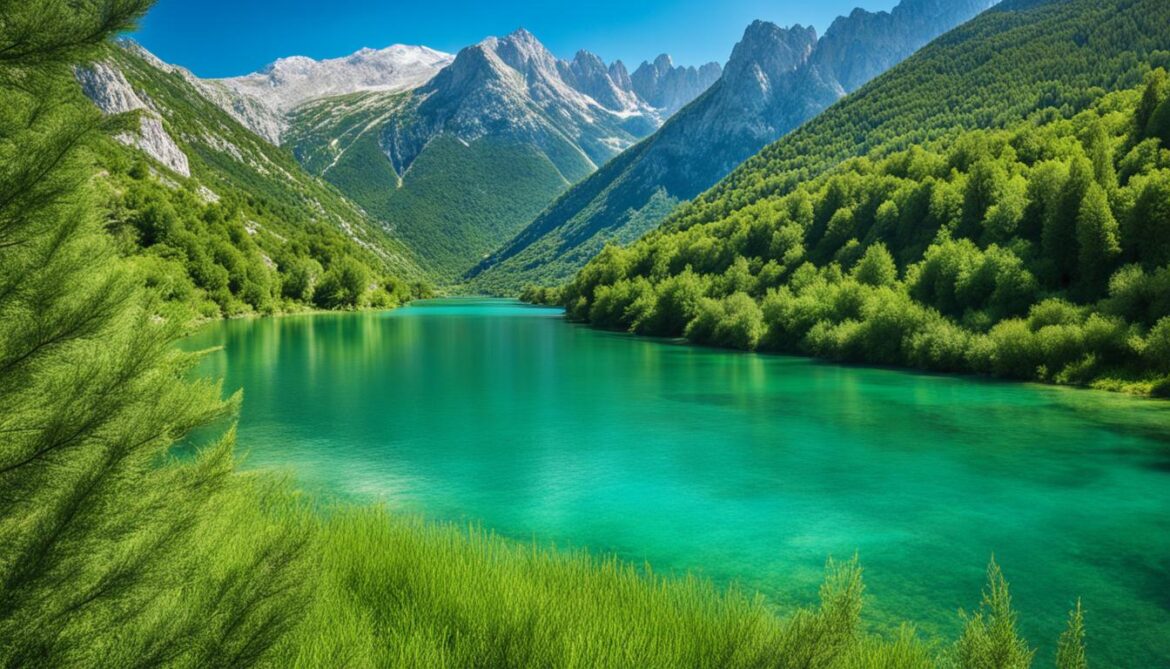
By recognizing the importance of sacred natural sites and incorporating them into conservation efforts, Europe can ensure the preservation of both its biodiversity and cultural heritage. It is imperative to take action and prioritize the protection of these sacred lands, not only for the present but also for the future of our planet.
Sacred Natural Sites in Africa
Africa is home to a rich tapestry of diverse cultures, traditions, and natural landscapes. Within this context, sacred natural sites hold a special place of reverence and importance. These sites, often reflecting animist traditions, are protected groves that serve as places of prayer, ancestral worship, and ceremonial gatherings for many African communities.
African Sacred Sites are not only treasured for their cultural significance but also for their ecological value. These sacred groves play a vital role in *Nature Conservation Albania*, acting as crucial refuges for a variety of *medicinal plants* and abundant wildlife.
Traditional ecological knowledge passed down through generations is closely tied to the protection of these sites. Respect for the natural environment and sustainable practices form the foundation of the cultural practices associated with these sacred natural sites. This Traditional Ecological Knowledge Albania represents a wealth of wisdom that helps ensure the long-term preservation of the *biodiversity* found within these sacred spaces.
“Sacred natural sites in Africa are not only a bridge between spiritual and ecological values, but also a testament to the harmonious relationship between people and nature.”
The knowledge and practices surrounding these sacred natural sites are invaluable for *Nature Conservation Albania* and sustainable development in Africa. They provide insights into coexistence, resource management, and the resilience of traditional cultures. By embracing and recognizing the importance of these sacred sites, Africa can continue to preserve its rich natural heritage for future generations to appreciate and cherish.
African Sacred Sites: A Source of Biodiversity Conservation
Biodiversity is the lifeblood of our planet, and Africa’s sacred natural sites play a crucial role in its preservation. These sites often house a diverse array of plant species, including medicinal plants with cultural and ecological significance. The protection of these sites ensures the conservation of both rare and endemic plant species, contributing to the overall health and resilience of regional ecosystems.
Moreover, the establishment of sacred groves as sanctuaries for wildlife serves as a refuge for threatened and endangered species. From majestic elephants to elusive primates and vibrant birdlife, these sacred natural sites provide crucial habitats for a wide range of fauna.
By promoting the preservation of African Sacred Sites, we can foster a harmonious balance between human activities and the natural environment. Recognizing and conserving these sites allows us to protect both cultural heritage and biological diversity, ensuring a sustainable and vibrant future for Africa.
| Sacred Natural Sites in Africa | Ecological Value | Cultural Significance |
|---|---|---|
| Medicinal plants | Refuge for threatened and endangered species | Places of prayer and ancestral worship |
| Biodiversity hotspots | Preservation of rare and endemic plant species | Ceremonial gatherings and cultural practices |
| Habitats for diverse wildlife | Conservation of regional ecosystems | Traditional ecological knowledge |

Through a holistic approach to *Nature Conservation Albania* and the safeguarding of traditional ecological knowledge, Africa can continue to thrive alongside its sacred natural sites. By recognizing the value of these sites and cultivating a deeper appreciation for their cultural and ecological significance, we can forge a sustainable path forward in harmony with nature.
National Parks in Albania
Albania boasts a remarkable array of national parks, each offering a unique glimpse into the country’s stunning natural beauty. From majestic mountains to tranquil lakes and captivating coastal areas, these national parks are a haven for outdoor enthusiasts, nature lovers, and culture seekers alike. With a commitment to conservation and preserving the Albanian natural heritage, these parks provide a range of opportunities to explore and connect with the country’s diverse landscapes.
One such national park is Butrint National Park, a UNESCO World Heritage Site that seamlessly blends historical treasures with breathtaking natural landscapes. Located in southern Albania, Butrint is home to ancient ruins, including a Roman theater, basilica, and city walls. The park’s natural environment boasts lush forests, meandering streams, and a picturesque lagoon. Visitors can immerse themselves in the rich history and explore the wonders of both the past and present.
Other national parks in Albania include the renowned Valbona Valley National Park, nestled in the rugged landscapes of the Albanian Alps. This park offers visitors an awe-inspiring mountain experience, with its towering peaks, serene valleys, and picturesque alpine villages. Hiking, mountain biking, and wildlife viewing are just a few of the activities that allow visitors to appreciate the natural wonders of this pristine location.
The Theth National Park, neighboring Valbona Valley, is another gem in the Albanian Alps. With its lush valleys, crystal-clear rivers, and historical sites like the iconic Lock-In Towers, this park offers a truly authentic and enriching experience. Hikers, wildlife enthusiasts, and rock climbers will find plenty to explore and admire in this untouched natural paradise.
| National Park | Key Features |
|---|---|
| Butrint National Park | Ancient ruins, diverse natural environment |
| Valbona Valley National Park | Rugged mountain landscapes, alpine villages |
| Theth National Park | Lush valleys, crystal-clear rivers, historical sites |
These national parks not only offer breathtaking scenery and outdoor activities but also provide a glimpse into Albania’s rich cultural heritage. Whether it’s exploring ancient ruins, immersing yourself in the local traditions of alpine villages, or simply basking in the tranquility of nature, these parks offer a truly immersive experience that celebrates the best of Albania’s natural beauty and cultural significance.
Experience the wonders of Albania’s national parks and embark on a journey of discovery, conservation, and appreciation for the country’s astonishing natural heritage.
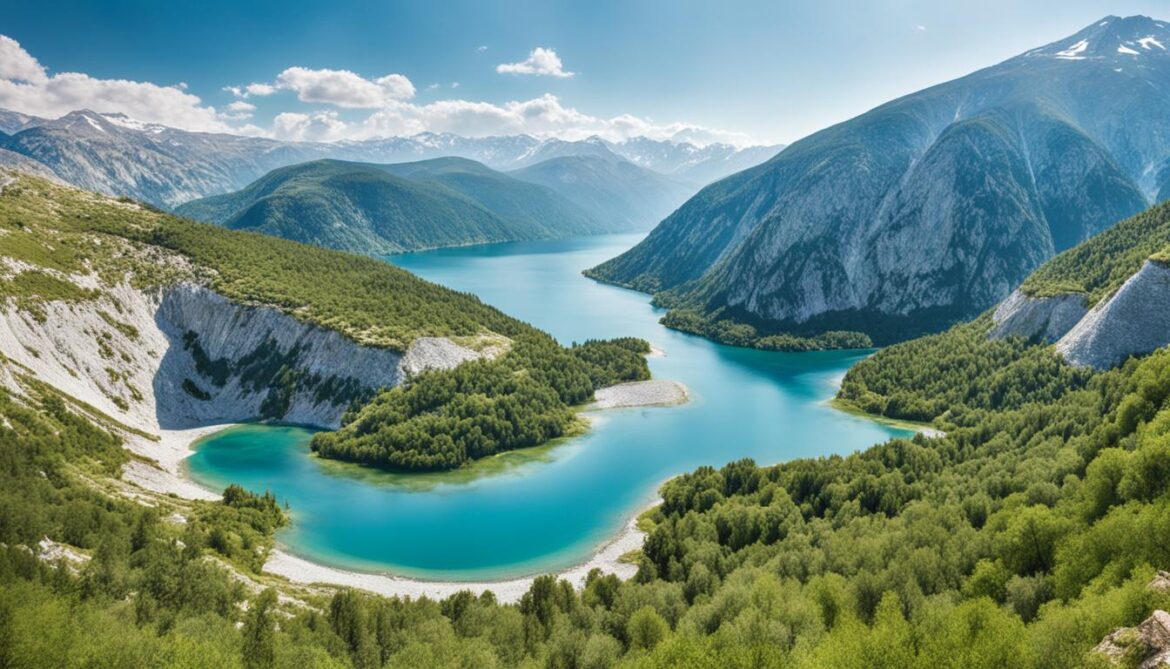
Valbona Valley National Park
Valbona Valley National Park is a breathtaking destination located in the heart of the Albanian Alps. Known for its rugged mountain landscapes and charming alpine villages, this national park offers a truly unforgettable experience for nature enthusiasts and adventure seekers.
The park is renowned for its stunning biodiversity, boasting a wide range of plant and animal species. From majestic beech forests to vibrant meadows, Valbona Valley is a haven for ecological diversity. Visitors can explore the park’s trails and encounter unique and rare flora and fauna along the way.
One of the most popular activities in Valbona Valley National Park is hiking. With its diverse network of trails, hikers can embark on unforgettable journeys through the mesmerizing alpine landscapes. From challenging treks to leisurely walks, there is a trail for every level of experience.
For those seeking an adrenaline rush, mountain biking is another exciting activity available in the park. The rugged terrain and breathtaking scenery make for an exhilarating biking experience like no other.
Wildlife enthusiasts will also find delight in Valbona Valley National Park. The park’s diverse ecosystems are home to various animal species, including brown bears, lynx, and chamois. Wildlife viewing opportunities abound, allowing visitors to observe these magnificent creatures in their natural habitat.
The village of Valbona serves as the gateway to the park, offering a range of tourist services and accommodations. It is a charming destination in itself, showcasing the traditional Albanian way of life and providing a glimpse into the local culture.
In summary, Valbona Valley National Park is a true gem nestled in the Albanian Alps. With its rugged mountain landscapes, rich biodiversity, and an array of outdoor activities, it is a must-visit destination for nature lovers and adventurers alike.
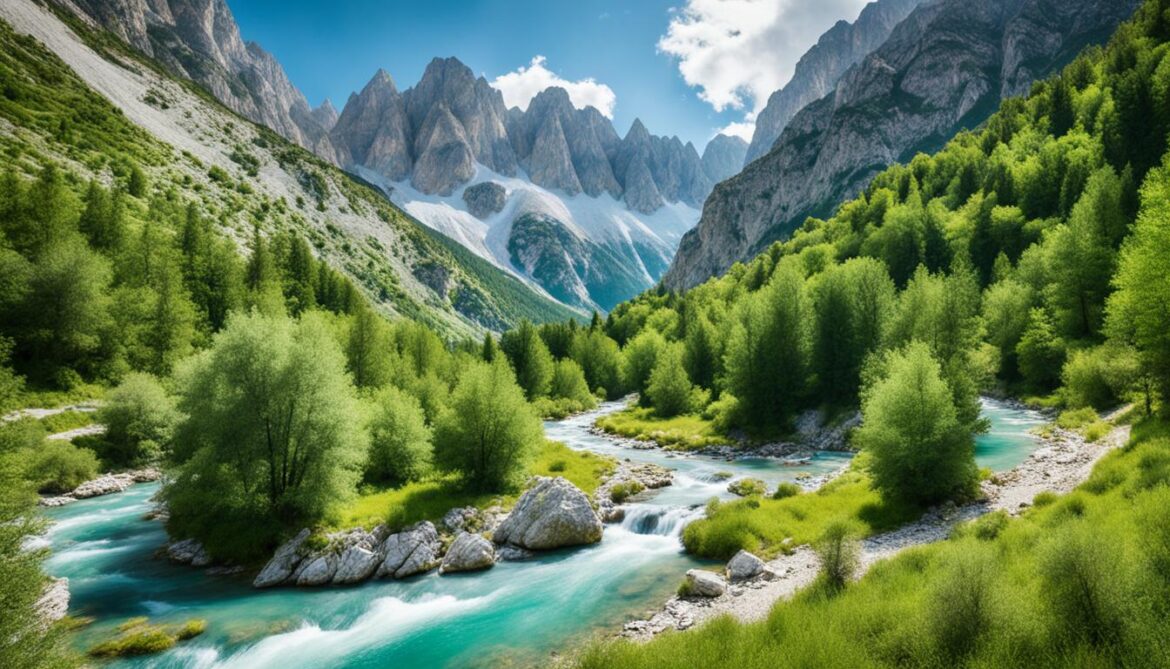
Theth National Park
Explore the breathtaking beauty of Theth National Park, nestled in the Albanian Alps. This pristine nature reserve offers magnificent mountainous landscapes and a chance to immerse yourself in the unspoiled beauty of Albania.
Theth National Park showcases lush valleys, where vibrant greenery flourishes against the backdrop of towering peaks. Crystal-clear rivers weave their way through the park, creating a tranquil oasis for visitors to enjoy.
“Theth National Park is a hidden gem in the Albanian Alps, offering a true escape into nature’s embrace. The beauty of this park is unparalleled, and the sense of serenity it provides is truly captivating.”
Embark on a hiking adventure through the picturesque trails of Theth National Park. As you meander through the valleys and ascend to higher elevations, you’ll be rewarded with breathtaking vistas at every turn. Keep your eyes peeled for the diverse wildlife that calls this park home, from soaring eagles to graceful deer.
If you’re seeking an adrenaline rush, rock climbing is a popular activity in Theth National Park. Challenge yourself to conquer the rugged cliffs and experience the thrill of reaching new heights. Whether you’re a beginner or an experienced climber, there are routes suitable for all skill levels.
The Lock-In Towers: A Glimpse into History
Theth National Park is also known for its historical sites, such as the iconic Lock-In Towers. These ancient towers served as defensive structures for the local community during times of conflict, providing a fascinating glimpse into Albania’s rich history.
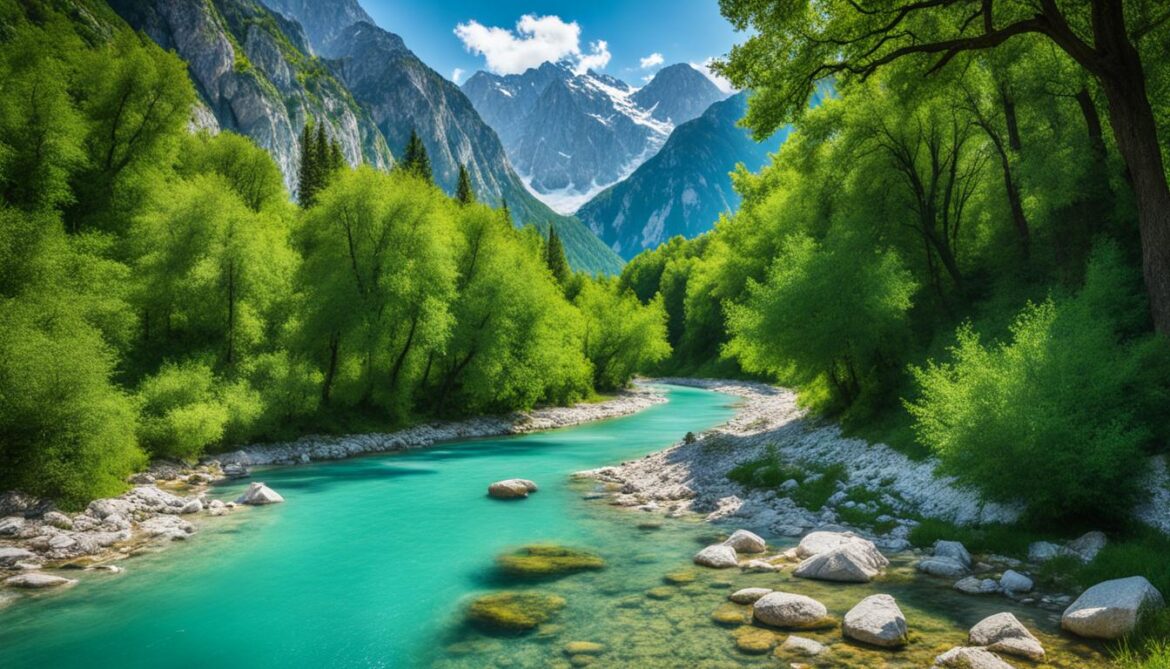
Stay in the charming village of Theth, which serves as the gateway to the park. Here, you’ll find a range of accommodation options, from cozy guesthouses to rustic mountain lodges. Immerse yourself in the local culture, sample traditional Albanian cuisine, and learn about the customs and traditions of the friendly villagers.
Theth National Park is a must-visit destination for nature enthusiasts and adventure seekers alike. Whether you’re captivated by the pristine nature, eager to explore historical landmarks, or craving an exhilarating outdoor experience, this park has something for everyone.
| Activities | Highlights |
|---|---|
| Hiking | Immerse yourself in the breathtaking landscapes as you explore the park’s trails. |
| Wildlife Viewing | Spot a variety of wildlife, including eagles, deer, and other native species. |
| Rock Climbing | Challenge yourself on the park’s rugged cliffs and experience the thrill of scaling new heights. |
Butrint National Park
Located in Southern Albania, Butrint National Park is a true gem and a UNESCO World Heritage Site. This historical treasure is a testament to the rich past of Albania and offers a fascinating glimpse into ancient civilizations.
The park is home to a remarkable collection of ancient ruins, including a Roman theater, basilica, and city walls. These architectural marvels tell the story of the diverse cultures that once thrived in this region.
Butrint National Park not only boasts historical treasures but also showcases the beauty of Albania’s natural environment. The park is characterized by lush forests, meandering streams, and a stunning lagoon. It offers a serene escape into nature, providing visitors with a tranquil and picturesque setting.
“Butrint National Park offers a unique blend of history and natural beauty. It’s a place where visitors can immerse themselves in the captivating stories of the past while surrounded by the breathtaking landscapes of Albania.”
Visitors to Butrint National Park can explore the ancient ruins and experience the grandeur of a bygone era. You can wander through the remains of the Roman theater, imagining the performances that once took place on its stage. Or marvel at the intricate mosaic floors of the ancient basilica, admiring the craftsmanship of the past.
Butrint National Park is a paradise for history buffs and nature enthusiasts alike. Whether you’re strolling through the archaeological site or hiking through the scenic trails, you’ll be captivated by the wonders that this park has to offer.
Exploring Butrint National Park:
If you’re planning a visit to Butrint National Park, here are some must-see highlights:
- Explore the ancient ruins, including the Roman theater, basilica, and city walls.
- Walk along the picturesque lakeside promenade, taking in the tranquil views of the lagoon.
- Embark on a guided tour to learn about the history and significance of the archaeological site.
- Enjoy a picnic amidst the natural beauty of the park, surrounded by lush greenery and singing birds.
- Take a boat ride on the lagoon, marveling at the scenic landscapes and spotting local wildlife.
Butrint National Park is a place where history and nature converge, offering a unique and unforgettable experience. Whether you’re a history enthusiast or simply seeking natural beauty, this park will leave you in awe of Albania’s rich cultural heritage and stunning landscapes.

Conclusion
Albania’s sacred natural sites and national parks play a crucial role in preserving the country’s rich biodiversity and cultural heritage. These awe-inspiring locations provide not only vital habitats for diverse plant and animal species but also opportunities for outdoor enthusiasts to immerse themselves in the beauty of Albanian nature.
Visitors to these sites can enjoy a range of activities, including invigorating hikes, captivating wildlife sightings, and capturing stunning photographs of Albania’s natural wonders. The combination of breathtaking landscapes and diverse ecosystems make these places a haven for nature lovers and explorers alike.
However, the protection of sacred natural sites and national parks requires the joint effort and collaboration of local communities, dedicated conservationists, and government authorities. By working together, we can ensure the preservation of Albania’s remarkable natural heritage for future generations to cherish and celebrate.




